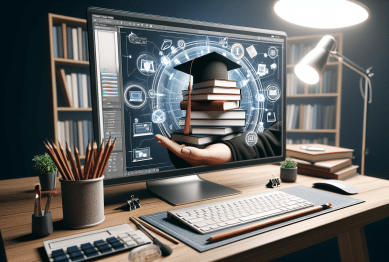In today’s digital age, where ideas often flow seamlessly across screens and cloud services, it may seem that physical spaces are less important than ever for creative work. However, the role of physical environments in shaping, nurturing, and evolving ideas remains vital—and in some cases, more relevant than before. This article explores why when ideas need a physical space, the tangible setting can become a critical catalyst for innovation, collaboration, and deeper thinking. We’ll also look at emerging trends and practical tips for leveraging physical environments in a way that supports creative success.

Why Physical Space Matters for Ideas
While digital tools enable rapid communication and remote collaboration, physical spaces provide sensory and contextual cues that influence how ideas form and evolve. Neuroscience and psychology research show that the environment directly affects cognitive processes such as attention, memory, and problem-solving. Physical spaces help externalize thinking, making abstract concepts visible and more manageable.
1. Tangibility Enhances Cognitive Processing
Writing or sketching ideas on whiteboards, sticky notes, or physical models allows for spatial reasoning that digital tools struggle to replicate fully. The tactile feedback and ability to physically move and rearrange elements help engage different brain areas, improving memory and creative insight.
2. Physical Interaction Supports Collaboration
Group creativity benefits when team members can physically gather around shared surfaces, such as tables or boards, enabling spontaneous gestures, facial expressions, and real-time feedback that foster deeper communication. Virtual collaboration often lacks this rich layer of social interaction, which can slow or dilute idea development.
3. Dedicated Spaces Signal Importance and Focus
A designated physical space for creative work—whether a room, studio, or workshop—serves as a mental anchor. It helps individuals shift into a mindset conducive to exploration and experimentation, separating creative activities from routine tasks or distractions.
Current Trends in Physical Spaces for Idea Development
Recognizing the value of physical environments, organizations and individuals are designing and adopting spaces specifically to support creativity and innovation.
Hybrid Workplaces With Creative Zones
Post-pandemic hybrid work models have prompted companies to rethink office layouts. Rather than large open plans, many now incorporate dedicated creative zones equipped with whiteboards, movable furniture, and materials for rapid prototyping. These spaces encourage face-to-face brainstorming sessions without forcing constant office presence.
Makerspaces and Innovation Labs
Communities and universities are investing in makerspaces—shared workshops with tools ranging from 3D printers to woodworking equipment—where ideas can be quickly materialized. This hands-on approach accelerates the transition from concept to prototype, providing immediate feedback and iteration possibilities.
Analog Note-Taking and Idea Capture
Despite digital dominance, there’s a renewed interest in analog tools like notebooks, index cards, and sketchpads. Physical note-taking has been shown to improve comprehension and retention compared to typing. Using paper-based methods alongside digital tools creates a hybrid workflow that respects the physicality of ideas.
Practical Tips for Creating a Physical Space That Supports Ideas
Whether you’re an individual thinker or part of a team, designing a physical environment to nurture ideas involves intentional choices.
1. Provide Flexible Surfaces
Use whiteboards, corkboards, or large sheets of paper that can be easily updated and rearranged. This flexibility accommodates evolving thought processes and encourages active engagement.
2. Incorporate Multi-Sensory Elements
Natural light, plants, varied textures, and even background sounds can influence mood and focus. Research indicates that such sensory diversity supports sustained attention and creative flow.
3. Designate Zones for Different Activities
Separate spaces for quiet reflection, collaborative discussion, and hands-on experimentation help individuals switch modes and reduce cognitive overload.
4. Keep Tools Accessible
Having writing instruments, sticky notes, sketch materials, or prototyping tools readily available lowers the barrier to capturing fleeting ideas.
5. Encourage Personalization
Allowing people to customize their space or bring meaningful objects fosters emotional connection, increasing comfort and openness to creative risk-taking.
The Role of Physical Space in Individual vs. Group Creativity
Physical spaces serve different functions depending on whether creativity is individual or collaborative.
- For individuals, a dedicated area free from distractions helps sustain deep focus and immersion.
- For groups, shared spaces enable the dynamic interplay of perspectives and spontaneous idea building.
Balancing these needs within a workspace can lead to more consistent and higher-quality creative output.
When Ideas Need a Physical Space: Looking Ahead
As technology advances, the interplay between digital and physical environments will continue evolving. Augmented reality (AR) and virtual reality (VR) promise to bridge gaps by layering digital content into physical spaces, potentially enhancing how ideas are visualized and manipulated (Billinghurst & Duenser, 2012).
However, the inherent benefits of when ideas need a physical space—such as sensory engagement, bodily interaction, and social connection—remain irreplaceable. Designers, organizations, and individuals who recognize and cultivate these aspects stand to unlock more meaningful and productive creative processes.
Conclusion
In an age dominated by virtual whiteboards, AI-assisted note apps, and seamless cloud syncing, it might seem like the need for physical idea spaces is fading. But the opposite is happening. Physical spaces—whether writable walls, modular studios, or pop-up collaboration hubs—are reclaiming their role as catalysts for deeper, more connected thinking.
When ideas need a physical space, it’s not about rejecting digital tools. It’s about acknowledging that some ideas live longer when they have a tangible anchor—something to attach themselves to, evolve within, and return to. These environments offer something that pixels often can’t: spatial memory, sensory engagement, and human-scale cues that keep thinking grounded and collaborative.
As organizations experiment with hybrid work models, and individuals search for sustainable ways to create and reflect, the need for physical idea spaces isn’t vanishing—it’s evolving. And those who invest in designing them intentionally will find themselves not just with more ideas, but with better ones.
References
- Bersin, J. (2019). The Rise of Makerspaces: How Hands-On Creativity Drives Innovation. Forbes. https://www.forbes.com/sites/joshbersin/2019/07/15/the-rise-of-makerspaces-how-hands-on-creativity-drives-innovation/
- Billinghurst, M., & Duenser, A. (2012). Augmented Reality in the Classroom. Computer, 45(7), 56-63. https://doi.org/10.1109/MC.2012.111
- Evans, G. W., & McCoy, J. M. (1998). When Buildings Don’t Work: The Role of Architecture in Human Health. Journal of Environmental Psychology, 18(1), 85-94. https://doi.org/10.1006/jevp.1997.0065
- Harvard Business Review. (2022). How Hybrid Workspaces Foster Innovation. https://hbr.org/2022/02/how-hybrid-workspaces-foster-innovation
- Küller, R., Ballal, S., Laike, T., Mikellides, B., & Tonello, G. (2009). The Impact of Light and Colour on Psychological Mood: A Cross-Cultural Study of Indoor Work Environments. Ergonomics, 49(14), 1496-1507. https://doi.org/10.1080/00140130903128979
- Larkin, J., & Simon, H. A. (1987). Why a Diagram is (Sometimes) Worth Ten Thousand Words. Cognitive Science, 11(1), 65-100. https://doi.org/10.1207/s15516709cog1101_4









